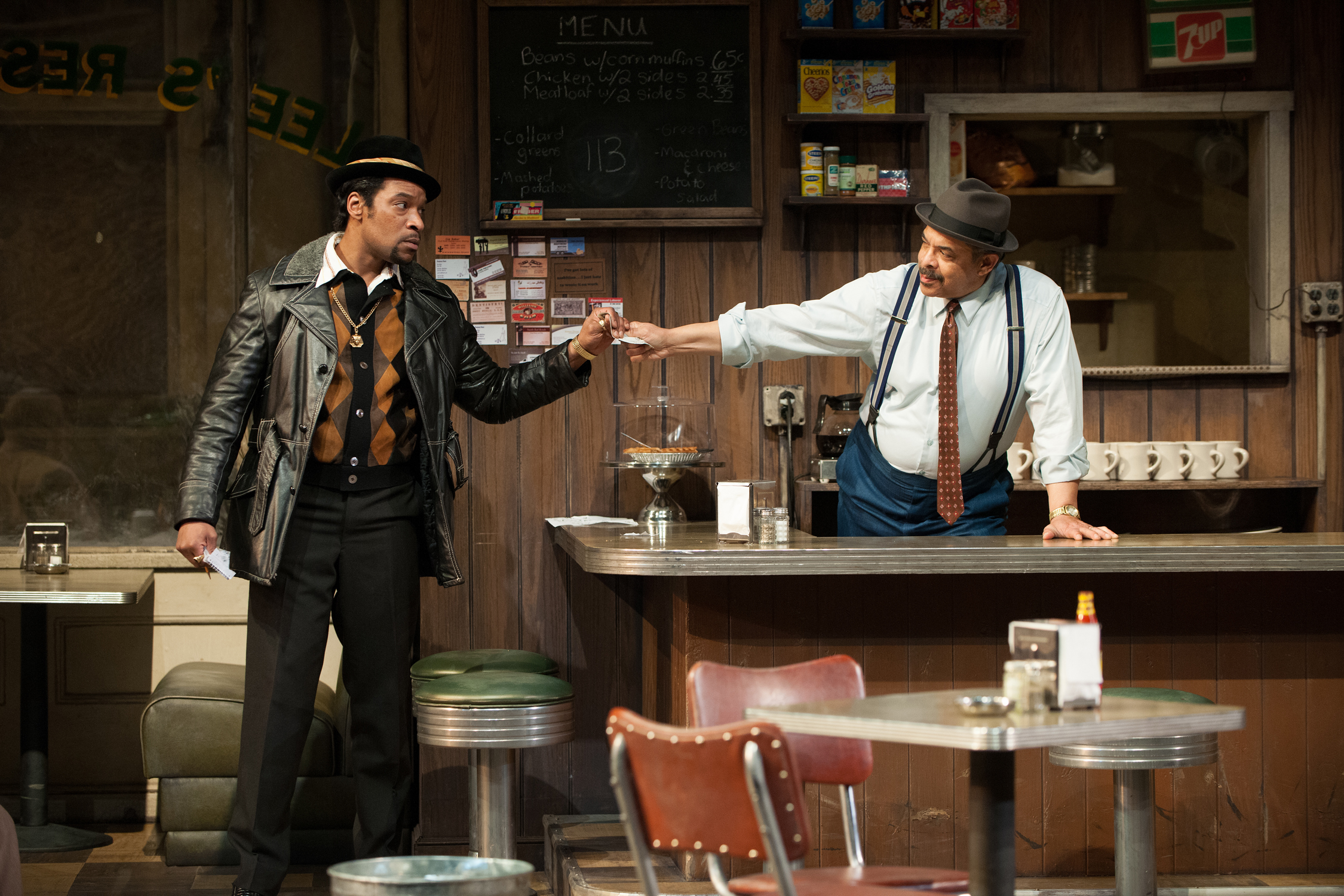
Samuel French is proud to support the August Wilson Monologue Competition, which was created by Kenny Leon and True Colors Theater Company in 2007 to carry on the legacy of August Wilson through the next generation of theatre artists. In 2017, the Dallas Competition expanded to include essays written about Mr. Wilson’s work.
Two Trains Running, the August Wilson Century Cycle play that takes place in 1969, is set amongst political angst in the American civil rights era. Having reached its climax with the March on Washington with Dr. Martin Luther King, the first wave of the modern civil rights movement is quieting down, although leaders from both sides are being assassinated. While the assassinations of Dr. King, Malcolm X, and the Kennedy brothers caused a martyrdom for their movements, the African American community began to feel disenfranchised with each killing. Many groups became split for lack of an authority figure, and others became cynical of the movement, themselves being beneficiaries of it. Complacency is rampant and opinions on how to deal with adversity vary greatly. Placed in such an influential decade, Two Trains Running showcases these changing times in the minority community.
August Wilson’s incorporation of these events is reflected in subtle portions of the play. Every character has a goal he or she wants to achieve, yet has been cheated on or struggles to make ends meet. Unlike other plays in the Century Cycle, there are no elders of wisdom to be relied upon for advice, and trials and tribulations remain. With lack of an experienced leader to guide them, the citizens around character Memphis Lee’s restaurant take matters into their own hands, at times taking advantage of their fellow man to make a dime, such as West and his funeral home.
Death and illness of leaders is a motif constantly relayed throughout the play: the burial of “Prophet Samuel,” the illness of Aunt Esther, and the breaking down of the jukebox. These people and items were symbols of hope and wisdom to all of the residents of Two Trains Running. Symbols that, in the case of Aunt Esther, have lasted generations dating back to the first black slaves on American soil, continuing to the ironic, feel-good blues of the jukebox. In a larger perspective, these allegories for the deaths of Malcolm X and Martin Luther King show the aftershocks of catastrophe. For a brief period of time in the ’60s, African Americans were being acknowledged, seen as equal, making progress in the fight for civil rights! The assassinations of these leaders, however, clouded over any previous triumphs made. The shadows of tragedy covered what hope there is.
Still, much like there are groups of attendees at Prophet Samuel’s burial, and others reaching out for Aunt Esther’s mystic healings, there are people who hold on to hope. The deaths of community leaders King and X paused any momentum carrying the civil rights movement, but did not completely squash the motivations of African Americans still eager to prevail. What becomes the real problem plaguing the black community is not the fear of being killed or abandoning hope; rather, it is what to accomplish now, and whom to follow. Within just one establishment, as in Memphis’s eatery, there are many who want to accomplish the same goal, but have different manners of finishing their objectives. Different schools of thought are present; Dr. King’s method of peaceful protest is appealing to some, while Malcolm X’s more radical methods appeal to others. Still there are people that cling to tradition and are patient waiting for their needs to be fulfilled. Combinations of these different methods are also present, removing any strict duality in thought there might be.
The actual killings themselves were mentioned by Sterling, the joker in the play, asking the restaurant’s patrons if they want to attend a rally to celebrate the birthday of Malcolm X. Memphis, the restaurant owner, responds cynically. This cynicism stems from his belief that it was the black community itself that killed Malcolm, not just in a literal sense, but in his ideals, being misrepresented and wrongly understood by many. Since the leaders are no longer alive to explain their own view or vision, many stop following entirely. Others start venerating them as spectacle. Mourners were being charged money to attend the funeral of Prophet Samuel, and others go to the Malcolm X rally because “everyone else is doing it.” This is a universal problem affecting all social justice issues in present day as well, and Two Trains Running commentary states that this is not due to malice, but lack of motivation.
With time and determination, however, wounds heal and movements keep going. Memphis, seemingly devoid of any hope, by definition is the most affected positively by Dr. King and X’s death. Taking elements of both men’s philosophies, he got the money he demanded for his land, sternly stood his ground, yet was patient throughout. The symbols of hope that were sick or broken are now working again. The jukebox plays music once more and Aunt Esther, the spirit and culture of African American life and wisdom, lives again. Through a time of despair, solidarity and hope carried the community to live another day.
To purchase a copy of August Wilson’s Two Trains Running, click here, and to learn more about licensing a production, click here.

Noël Coward’s Travels

Kate Chopin in New Orleans: Mother-Daughter Author Duo Collaborate on Historical Book



